QuestionHi! Thank you for the quick and the great response Chrys.
Wow, your website has a wealth of useful information for my new babbies ! Okey, I have decided that I want to try to tame the birds. This way I can actually play with them when they are older, not like their crazy parents :). I have looked at your website and will go out to buy a hand feeding syringe, formula, heating pad, fish bowl, thermostat and some pine shavings. However, I am not exactly sure what the formula is. If I go to petco, will I find something specifically that says lovebird formula? Also, in the future when I set everything up, should I close the cover of the bowl and have some air holes, or leave it open?
Aside from all this, I am still a little fearful of taking the chicks away and they dont give any feeding response. I think it has been more than 10 days that they have hatched, but on the other note, they still look pretty ugly. Do i still have time?
Another fear I have is taking the chicks away from their mother, is it going to damage her emotionally?
Also,I do not know how I should approach the beggining, do I just go to the nesting box, open it up, yank her chicks away and put them in the other cage, and cut all connetions with their mother?
After I yank them away, is there anything I need to do with the mother to calm her down or something?
I apologize for the many questions. It is just that you got me so excited, I didnt even know human handling the babbies was an option :)
Thanks,
Thomas
-------------------------
Followup To
Question -
Hi Chrys,
I just discovered that my lovebirds have had babbies, three of them. I think they hatched over two weeks ago. I am wondering if there is anything I need to do for them, change some how i feed them, etc. I have been feeding them 10 times more than regularly cause they eat so much now :) Any help and tips is much appreicated.
Thanks,
Thomas
Answer -
Hi, Thomas. Thanks for posting and congratulations!
For the parents, you need to feed them as much as they will eat so they can keep their babies properly fed. However, you need to feed them healthy, nutritious foods, not just seed.
You need to decide quickly (like in the next day or 2) what you are going to do with the babies (keep them, sell them, give them away) because they will not be tame unless you take action now. If they are not tame, no one will want them, except a breeder for breeding purposes. You either need to take the babies out and play with them several times a day (be careful...the parents will most likely try to attack you when you put your hand in the nestbox/cage...the female will be out for blood) or, better yet, pull the babies from the parents for handfeeding.
Go to my website and read what's there. Then come back and tell me what you've decided to do, and I'll guide you from there. My website is:
http://www.angelfire.com/falcon/birdinfo/index.html
My website isn't complete yet, but it has information that you need posted already. Do not delay...lovebirds need to be handfed/handled starting at about 10 days old if they are to be tame.
Chrys
AnswerHi again, Thomas. I'm glad you like my website!
The handfeeding formula you should buy is baby parrot handfeeding formula. There is not a specific formula just for lovebirds...there are 2 kinds...1 type for baby macaws (they need more fat in their diet) and 1 type for all other parrots. Get the one for all other parrots. There are different brand names: Kaytee Exact (which I use), Pretty Bird, Zupreem, etc. I have no idea if or what kind Petco sells, but if they don't have any, PetSmart, Jack's Aquarium and Pets sells the formula, as well as others I'm sure. If you can't find at any of these, you'll have to buy off the internet (Google search looking for "baby parrot handfeeding formula"). If you have to go to the internet, order ASAP and request overnight shipment, if you can afford this. For lovebirds, you'll need 10 and/or 20cc baby bird handfeeding syringes (these are large syringes without any needles). You can get these off the internet, too, if you can't buy them at the pet store (Google search for "parrot handfeeding syringes"). If you need help with any of this, let me know...I have many sources. Follow the instructions on the back of the package for mixing the formula. It must be 102 degrees F when fed to the babies (this is what the parents' body temps are and the food they regurgitate to the babies), so you might need to buy 2 thermometers. If you don't feed it at this temp, the baby's bodies won't be able to process the food.
You want to buy a fish aquarium, not a fish bowl. For 3 lovebirds until they wean, a 10 gallon should work good. Pet shops often sell damaged aquariums (cracked glass) for $5 or so. Since you won't be putting water in it, it doesn't matter if it's cracked. You can sometimes find these at garage sales, flea markets, or from newspaper ads, etc. You would place the heating pad under the aquarium, probably on medium to high heat depending on the ambient air (if the room is hot, you don't want to dehydrate the babies, so the heating pad might not need to be on high). This is why you need the thermometer, to tell you what the temp is inside the aquarium where the babies are. Be sure to put a sheet of newspaper or paper towel down before you put the pine shavings in (don't use cedar shavings) or you'll have a bigger mess to clean up. It makes it easy just to pick up the paper and throw the entire mess away (you'll need to change this substrate regularly in order to keep the babies clean and dry). It's even better if you use Rubbermaid drawer liners instead of pine shavings. These are rubber "mats" (you can cut them to size) and help the babies keep friction under their feet so they don't become "splay legged." Buy 2 and you can wash one while using the other...they aren't expensive. You can even add a thin layer of pine shavings on top just to keep feces from getting on the babies.
The babies have to have air, so you can use an aquarium screen cover on top or a window screen or anything else that will cover the top, but also allow plenty of air to get inside. You can also just cover half of the top with anything because the babies won't be able to fly out for a while, but they must have air, the heat must be able to stay inside the aquarium, and so things don't drop down inside and hurt the babies. You can use any type of container that fits these needs, not just an aquarium. But a cage doesn't work well because the sides are too open to keep heat inside.
The babies will give a feeding response if you rub the sides of their beaks starting up where the beak meets the face and work down, similar to if you had a gotee and used your forefinger and thumb on your chin like you were in deep thought (goofey comparison, I guess, but I can't think of anything else at the moment)! Chances are, they will be hungry enough that as soon as you touch their beaks, they will respond. A feeding response is when the baby bobs it's head up and down...you'll see when you get to that point. Babies don't ALWAYS have to give the feeding response, but for first timers, this is the way to learn. After a while, you'll know what you are doing (experienced human feeders understand this).
Baby parrots are so ugly they're cute! If they don't have any pin feathers yet (feathers starting to show through their skin), they are probably less than/just about 2 weeks old. You still have time! Play with them when you aren't feeding them and they are awake (they sleep after being fed and will sleep a lot while they are young) and you will have tame birds. You'll have to continue to play with them even after you stop handfeeding them when they wean or they won't stay tame (parrots don't automatically stay tame once they become tame...they have to interact with people to stay that way).
The parents may be upset at first, but they get over it fast. As a matter of fact, they might even be glad to have them gone (I've seen some parents react like "shew...we can finally rest!). They may look for them the first day or so, but don't worry...they won't become emotionally damaged. You don't need to worry about mom or dad. You need to be more worried about how you're going to get the babies away from them without pulling back a bloody finger/hand! I usually place something over the nestbox hole, with the parents out of the nestbox, to get the babies out. Then, remove the nestbox if you don't want more babies because the parents may lay eggs again soon after. Yes, you remove the babies, cut all connections, and immediately put the babies in the warm container. You want the babies to imprint on you, not the parents. After the babies have been removed (days to a week or so later, depending on the adults), the parents will no longer recognize them as their own babies...birds aren't the same as humans in this regard. As a matter of fact, the parents may harm/kill them if you try to put them back after they've been removed, so be sure this is what you want to do before you do it. Once the babies are weaned/on their own, the parents will treat them just like any other bird (they still won't know they are their offspring).
Your questions are not a problem! Have fun with your baby lovebirds and handle them as often as possible (cuddle with them when you are watching TV, when they get some feathers play with them on the floor, etc.). This is how you make them tame parrots! They are fun and will keep you laughing as they grow...they do some funny things as youngsters!
Don't hesitate to come back with questions, even those you might seem to be silly or stupid. I'd rather you ask than for you to run into problems or babies that become ill. You'll probably want to know how much to feed them at each feeding, etc., so I'll be looking for your postings!
Remember to wash your hands thoroughly BEFORE handling the babies each time. Babies are born with no immunities to illness/disease (immunities develop as they grow and become exposed) and can become ill from bacteria/germs on our hands. Also, be sure to wash/disinfect the syringes, what you mix the formula in, the thermometer you use to test the formula, etc. each time so the babies don't catch something from these. Hot soap and water works well, and disinfect with Clorox water or other disinfectant at least once per day (rinse very well). Also, don't forget to keep the container clean.
Chrys

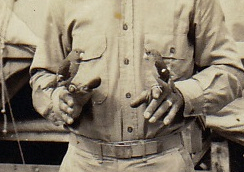 ID Birds
Question
Panama Birds
My uncle served in Panama in 1941
ID Birds
Question
Panama Birds
My uncle served in Panama in 1941
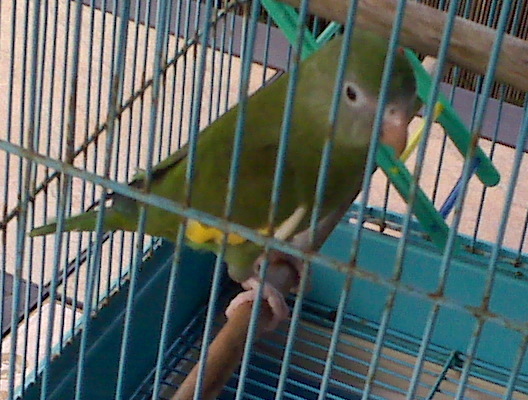 What type of parrot is this?
Question
Friendly bird
A week ago ths small parrot flew
What type of parrot is this?
Question
Friendly bird
A week ago ths small parrot flew
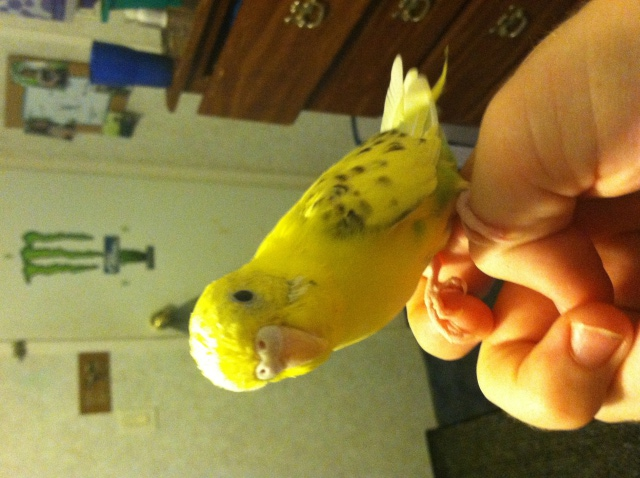 Parakeet gender
Question
Parakeet
Hi, I looked for an expert und
Parakeet gender
Question
Parakeet
Hi, I looked for an expert und
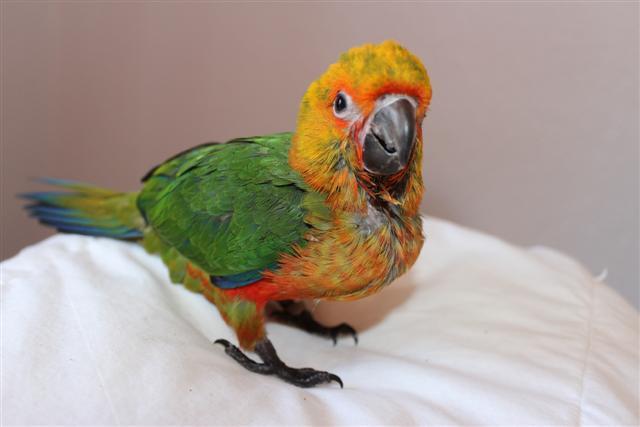 Jenday Conure Weaning?
Question
Castor the Conure
Hi
I have a 9 week o
Jenday Conure Weaning?
Question
Castor the Conure
Hi
I have a 9 week o
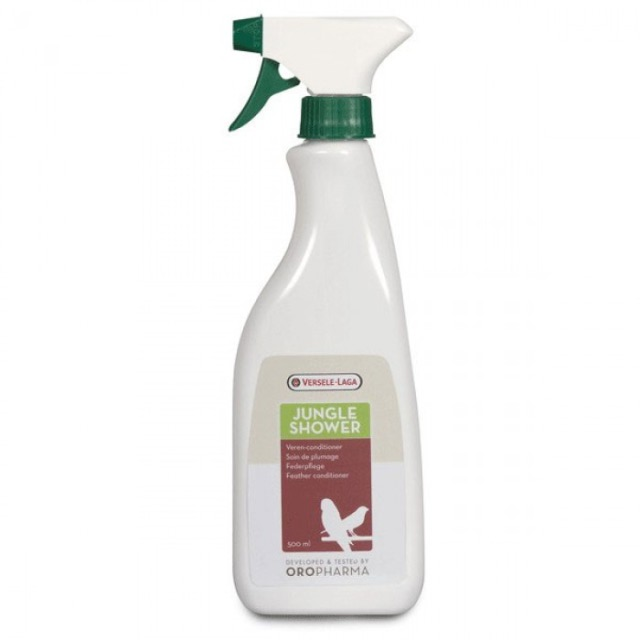 Indian Ringneck Health Issue
QuestionI have an Indian Ringneck who had been neglecte
Indian Ringneck Health Issue
QuestionI have an Indian Ringneck who had been neglecte